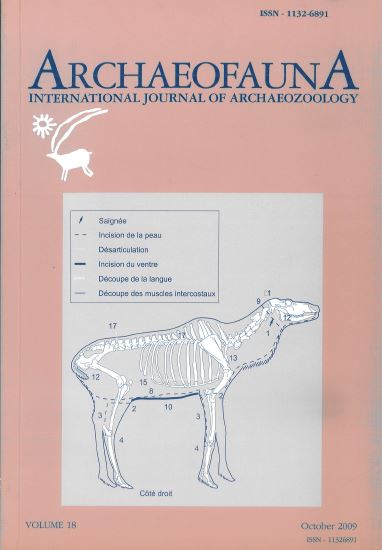Microvertebrados exhumados del sitio arqueológico “Cueva Arroyo Colorado” (Mendoza, Argentina): aspectos tafonómicos y significación paleoambiental
Keywords:
Argentina, Microvertebrates, Taphonomy, Paleoenvironment, Late Holocene, Anthropic impact, Southern MendozaAbstract
The present study constitutes a taphonomic analysis of microvertebrate assemblages recovered from the archaeological site of Cueva Arroyo Colorado (Mendoza, late Holocene) (35º12´ S y 70º05´ W) in order to carry out a paleoenvironmental characterization and investigate the assumption that microvertebrates were indeed eaten by humans. As an actualistic control, contents of pellets of Tyto alba (Scopoli, 1769), collected near the archaeological site were studied. The faunal sample was the product of two different episodes. In Component II (3190-1380 BP), the main agent responsible for the accumulation was probably a quite destructive mammalian carnivore, possibly a felid. In Component I (1380-770 BP), the main accumulator appears to have been an owl with a restricted destructive capacity, such as the Barn owl.Anthropic activity evidences, such as cutmarks and burned bones were ocassionally found. Component II faunas exhibited scarce evidence of postdepositional modifications yet their Component I equivalents showed many cases of trampling, sedimentary corrosion and spots of manganese oxides. Taking into account the ecological traits of the various taxa, it appears that the environment around the site did not suffered substantial changes in the last 3200 years. Nevertheless, the impoverishment of the taxonomic diversity that was observed through time, and the appearance of Abrothrix olivaceus (Waterhouse, 1837), all point to a degradation of the environment since XIX century that one may track to the domestic cattle.

